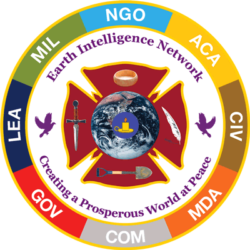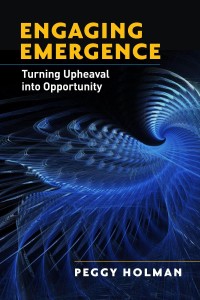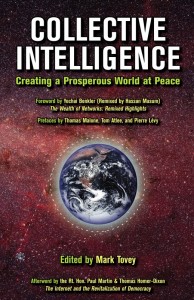
My book, Engaging Emergence, in 824 words
Posted on December 12, 2010 by PeggyHolman
I did a guest post for Pegasus Communications last week, providing an appetizer for my book. Below is a slightly longer version — with examples restored. If you’re looking for a taste of what it’s about, read on.
What would it mean if we knew how to face challenging situations with a high likelihood of achieving breakthrough outcomes?
EXTRACT: Since the early nineties, I’ve sought to understand how we turn difficult, often conflicted issues into transformative leaps of renewed commitment and achievement. I’ve used whole system change practices — methods that engage the diverse people of a system in creating innovative and lasting shifts in effectiveness. I’ve co-convened conferences around ambitious societal questions like: What does it mean to do journalism that matters for our communities and democracy? And I’ve delved into the science of complexity, chaos, and emergence – in which order arises out of chaos – to better understand human systems. In the process, I have noticed some useful patterns, practices, and principles for engaging the natural forces of emergent change. Here are a few highlights:
All change begins with disruption.
Engaging disruption creatively helps us discover differences that make a difference.
Wise, resilient systems coalesce when the needs of individuals and the whole are served.
EXTRACT: The practice of collective reflection helps surface what matters to individuals and the whole. It can generate unexpected breakthroughs containing what is vital to each and all of us.
EXTRACT: Joel de Rosnay, author of The Symbiotic Man, introduced the notion of “the macroscope”. Just as microscopes help us to see the infinitely small and telescopes help us to see the infinitely large, macroscopes help us to see the infinitely complex.






